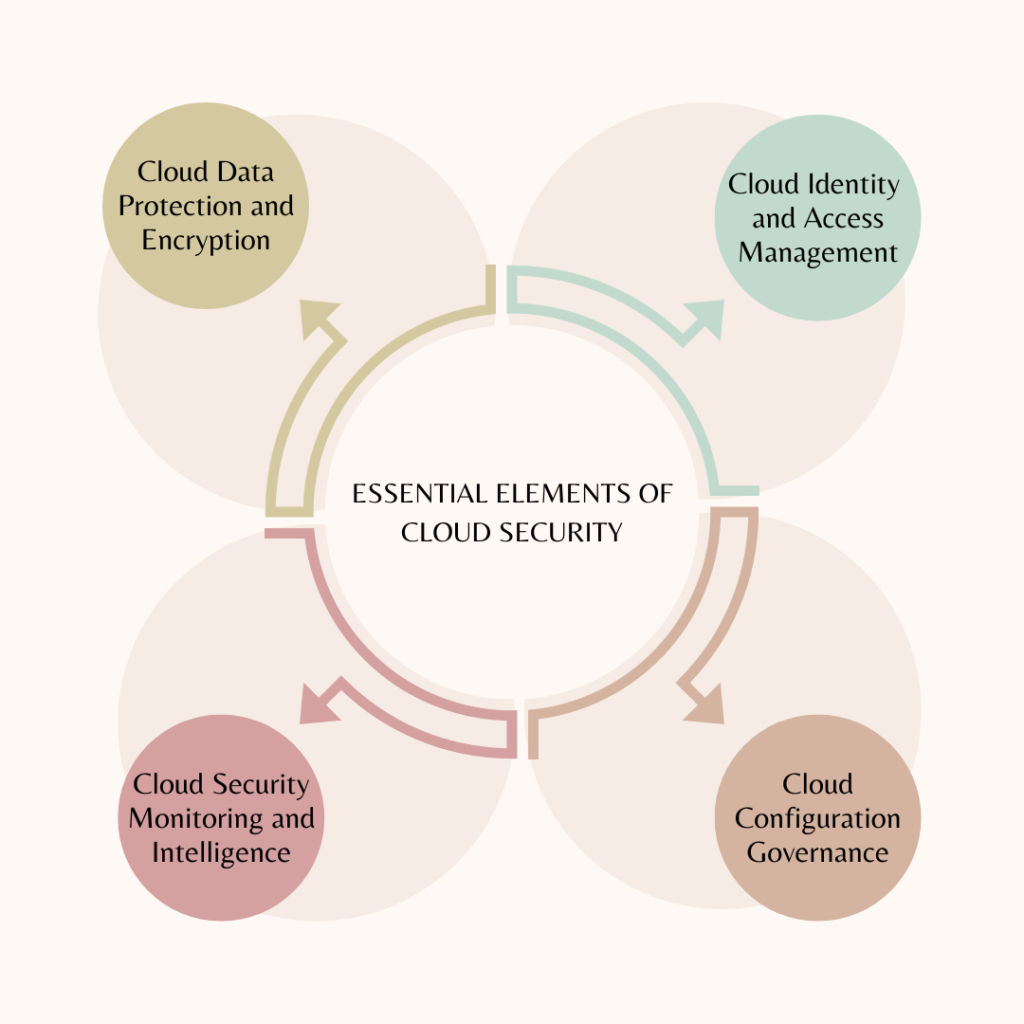Cloud computing dominates the modern technology landscape. But embracing the advantages of the cloud also comes with new security vulnerabilities that organizations need to understand and address.
In this comprehensive guide, we’ll demystify cloud security, break down the essential elements every business should implement for protection, overview leading solutions, and share best practices for keeping data secure in the cloud.
Table of Contents
What is Cloud Security?
Cloud security refers to the protocols, technologies, controls and procedures used for protecting data, applications, and cloud computing infrastructure from cybersecurity threats. It involves:
- Securing sensitive data stored and processed within cloud environments provided by companies like Amazon Web Services, Microsoft Azure, Google Cloud, and more.
- Safeguarding the underlying cloud infrastructure, including the servers, networking equipment, virtualization layers, and hypervisors that deliver cloud services.
- Protecting connectivity between user devices and cloud service providers.
- Maintaining compliance with data privacy regulations, which becomes more complex in public cloud environments.
- Applying access controls to restrict unauthorized usage of cloud resources.
Why Cloud Security Matters
As organizations continue migrating IT systems and data to various cloud environments, both public and private, risks and vulnerabilities are escalating. This makes implementing comprehensive cloud security vital:
- Breaches of cloud provider infrastructure can expose vast amounts of sensitive customer data.
- Distributed denial-of-service (DDoS) attacks leverage cloud platform resources to overwhelm targets with excessive traffic.
- Misconfigured cloud storage instances have exposed millions of customer records publicly on the internet.
- Malicious insider threats at public cloud providers can potentially access and improperly use customer data/resources.
- Targeted attacks to steal cloud platform user credentials provide access to valuable cloud resources.
Proactively securing cloud environments reduces these risks and ensures compliance with regulations like HIPAA and PCI DSS.
Essential Elements of a Cloud Security Strategy

A multilayered approach combining cloud-native security controls with third-party solutions should address these core areas:
Cloud Data Protection and Encryption
Encrypting sensitive data at rest in cloud storage systems, as well as in transit during transfers, helps prevent unauthorized access to important records like customer data or intellectual property should perimeter defenses fail. Proper management of encryption keys is critical.
Cloud Identity and Access Management
Centralize control and auditing of which users, applications, and systems can access cloud provider resources. Identity and access management (IAM) safeguards cloud accounts, services, and data from unauthorized usage.
Cloud Security Monitoring and Intelligence
Actively monitor account activity across cloud environments using analytics to identify anomalies that could indicate cyber threats and security incidents. Incorporate threat intelligence to detect known indicators of compromise from bad actors.
Cloud Configuration Governance
Enforce security policies and compliance requirements like HIPAA and PCI DSS through automated configuration management across cloud deployments and regions. Limit configuration drift.
Top Cloud Security Best Practices
In addition to robust technical safeguards, organizations should follow these critical cloud security best practices:
- Maintain regular backups of critical cloud data in case recovery or restoration is ever needed following an incident.
- Continuously monitor user activity, access patterns and configurations for anomalies that could indicate malicious threats or mishandling of data.
- Follow the principle of least privilege by restricting user permissions to only those absolutely necessary for assigned tasks and job functions.
- Use strong multi-factor or even biometric authentication mechanisms to rigorously validate user identities before granting access to cloud accounts and resources.
- Ensure all cloud software and settings stay updated by patching frequently and enabling auto updates for maximum security.
- Provide comprehensive cloud security training to educate employees on risks as well as policies and procedures for safely handling data in the cloud.
Navigating the Cloud’s Shared Responsibility Model
Securing the cloud is a shared responsibility between providers like AWS, Microsoft Azure, and Google Cloud, and their organizational users:
- Cloud providers are responsible for physical data center security plus foundational cloud infrastructure and networking security.
- However, users are responsible for securing their own data, account access, guest operating systems, applications accessed via the cloud, and overall cloud use.
Fully understanding the shared responsibility model is critical for effectively securing cloud environments and reducing risks.
The cloud offers amazing potential, but realizing the benefits safely requires making cloud security a priority. By taking proactive steps to protect data, accounts, apps, and infrastructure access, companies can move to the cloud confidently. With the right solutions and some security smarts, organizations can keep their data safe in the cloud.
FAQs
While things like firewalls and encryption are still important, cloud security works a bit differently because of the shared responsibility model. Both the cloud provider and you are responsible for different parts of security. Also, some cloud-specific protections need to be added to standard cybersecurity.
The big public cloud providers like AWS, Azure, and Google Cloud have top-notch physical data center security and infrastructure protections. But you still need to thoroughly secure the data, accounts, configurations and overall cloud use on your end.
Some examples are data breaches, hackers exploiting holes in cloud interfaces, DDoS attacks using cloud resources, bad guys stealing cloud login credentials, and not having tight enough access controls.
Certs like the CCSK, CCSP, and Cloud Security Alliance STAR cert show someone really knows their cloud security stuff. These validate the skills needed to properly protect organizations in the cloud.
Getting centralized reports on account activity, data movement, system configurations, etc. gives much more insight to spot risks early. Having visibility into what’s happening across cloud environments makes them far easier to secure.

